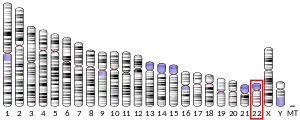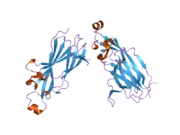| HIRA | |||||||||||||||||||||||||||||||||||||||||||||||||||
|---|---|---|---|---|---|---|---|---|---|---|---|---|---|---|---|---|---|---|---|---|---|---|---|---|---|---|---|---|---|---|---|---|---|---|---|---|---|---|---|---|---|---|---|---|---|---|---|---|---|---|---|
 | |||||||||||||||||||||||||||||||||||||||||||||||||||
| |||||||||||||||||||||||||||||||||||||||||||||||||||
| Identifiers | |||||||||||||||||||||||||||||||||||||||||||||||||||
| Aliases | HIRA, DGCR1, TUP1, TUPLE1, histone cell cycle regulator | ||||||||||||||||||||||||||||||||||||||||||||||||||
| External IDs | OMIM: 600237 MGI: 99430 HomoloGene: 48172 GeneCards: HIRA | ||||||||||||||||||||||||||||||||||||||||||||||||||
| |||||||||||||||||||||||||||||||||||||||||||||||||||
| |||||||||||||||||||||||||||||||||||||||||||||||||||
| |||||||||||||||||||||||||||||||||||||||||||||||||||
| |||||||||||||||||||||||||||||||||||||||||||||||||||
| Wikidata | |||||||||||||||||||||||||||||||||||||||||||||||||||
| |||||||||||||||||||||||||||||||||||||||||||||||||||
Protein HIRA is a protein that in humans is encoded by the HIRA gene.[5][6][7][8] This gene is mapped to 22q11.21, centromeric to COMT.[8]
Function
The specific function of this protein has yet to be determined; however, it has been speculated to play a role in transcriptional regulation and/or chromatin and histone metabolism.[8]
Research done by Salomé Adam, Sophie E. Polo, and Geneviève Almouzni indicate that HIRA proteins are involved in restarting transcription after UVC damage.[9] Function of HIRA gene can be effectively examined by siRNA knockdown based on an independent validation.[10]
Clinical significance
It is considered the primary candidate gene in some haploinsufficiency syndromes such as DiGeorge syndrome, and insufficient production of the gene may disrupt normal embryonic development.[8]
Interactions
References
- 1 2 3 GRCh38: Ensembl release 89: ENSG00000100084 - Ensembl, May 2017
- 1 2 3 GRCm38: Ensembl release 89: ENSMUSG00000022702 - Ensembl, May 2017
- ↑ "Human PubMed Reference:". National Center for Biotechnology Information, U.S. National Library of Medicine.
- ↑ "Mouse PubMed Reference:". National Center for Biotechnology Information, U.S. National Library of Medicine.
- ↑ Halford S, Wadey R, Roberts C, Daw SC, Whiting JA, O'Donnell H, Dunham I, Bentley D, Lindsay E, Baldini A (Mar 1994). "Isolation of a putative transcriptional regulator from the region of 22q11 deleted in DiGeorge syndrome, Shprintzen syndrome and familial congenital heart disease". Hum Mol Genet. 2 (12): 2099–107. doi:10.1093/hmg/2.12.2099. PMID 8111380.
- ↑ Lamour V, Lécluse Y, Desmaze C, Spector M, Bodescot M, Aurias A, Osley MA, Lipinski M (Sep 1995). "A human homolog of the S. cerevisiae HIR1 and HIR2 transcriptional repressors cloned from the DiGeorge syndrome critical region". Hum Mol Genet. 4 (5): 791–9. doi:10.1093/hmg/4.5.791. PMID 7633437.
- ↑ Magnaghi P, Roberts C, Lorain S, Lipinski M, Scambler PJ (Oct 1998). "HIRA, a mammalian homologue of Saccharomyces cerevisiae transcriptional co-repressors, interacts with Pax3". Nat Genet. 20 (1): 74–7. doi:10.1038/1739. PMID 9731536. S2CID 19736941.
- 1 2 3 4 "Entrez Gene: HIRA HIR histone cell cycle regulation defective homolog A (S. cerevisiae)".
- ↑ Adam, Salomé; Polo, Sophie E.; Almouzni, Geneviève (26 September 2013). "Transcription Recovery after DNA Damage Requires Chromatin Priming by the H3.3 Histone Chaperone HIRA". Cell. 155 (1): 94–106. doi:10.1016/j.cell.2013.08.029. PMID 24074863. S2CID 3147953.
- ↑ Munkácsy, Gyöngyi; Sztupinszki, Zsófia; Herman, Péter; Bán, Bence; Pénzváltó, Zsófia; Szarvas, Nóra; Győrffy, Balázs (2016). "Validation of RNAi Silencing Efficiency Using Gene Array Data shows 18.5% Failure Rate across 429 Independent Experiments". Molecular Therapy: Nucleic Acids. 5 (9): e366. doi:10.1038/mtna.2016.66. PMC 5056990. PMID 27673562.
- ↑ Lorain S, Quivy JP, Monier-Gavelle F, Scamps C, Lécluse Y, Almouzni G, Lipinski M (September 1998). "Core histones and HIRIP3, a novel histone-binding protein, directly interact with WD repeat protein HIRA". Mol. Cell. Biol. 18 (9): 5546–56. doi:10.1128/MCB.18.9.5546. PMC 109139. PMID 9710638.
Further reading
- Lorain S, Demczuk S, Lamour V, Toth S, Aurias A, Roe BA, Lipinski M (1996). "Structural Organization of the WD repeat protein-encoding gene HIRA in the DiGeorge syndrome critical region of human chromosome 22". Genome Res. 6 (1): 43–50. doi:10.1101/gr.6.1.43. PMID 8681138.
- Llevadot R, Scambler P, Estivill X, Pritchard M (1997). "Genomic organization of TUPLE1/HIRA: a gene implicated in DiGeorge syndrome". Mamm. Genome. 7 (12): 911–4. doi:10.1007/s003359900268. PMID 8995764. S2CID 35176001.
- Lorain S, Quivy JP, Monier-Gavelle F, Scamps C, Lécluse Y, Almouzni G, Lipinski M (1998). "Core histones and HIRIP3, a novel histone-binding protein, directly interact with WD repeat protein HIRA". Mol. Cell. Biol. 18 (9): 5546–56. doi:10.1128/MCB.18.9.5546. PMC 109139. PMID 9710638.
- Hall C, Nelson DM, Ye X, Baker K, DeCaprio JA, Seeholzer S, Lipinski M, Adams PD (2001). "HIRA, the human homologue of yeast Hir1p and Hir2p, is a novel cyclin-cdk2 substrate whose expression blocks S-phase progression". Mol. Cell. Biol. 21 (5): 1854–65. doi:10.1128/MCB.21.5.1854-1865.2001. PMC 86753. PMID 11238922.
- Lorain S, Lécluse Y, Scamps C, Mattéi MG, Lipinski M (2001). "Identification of human and mouse HIRA-interacting protein-5 (HIRIP5), two mammalian representatives in a family of phylogenetically conserved proteins with a role in the biogenesis of Fe/S proteins". Biochim. Biophys. Acta. 1517 (3): 376–83. doi:10.1016/S0167-4781(00)00300-6. PMID 11342215.
- Lehner B, Sanderson CM (2004). "A protein interaction framework for human mRNA degradation". Genome Res. 14 (7): 1315–23. doi:10.1101/gr.2122004. PMC 442147. PMID 15231747.
- Collins JE, Wright CL, Edwards CA, Davis MP, Grinham JA, Cole CG, Goward ME, Aguado B, Mallya M, Mokrab Y, Huckle EJ, Beare DM, Dunham I (2005). "A genome annotation-driven approach to cloning the human ORFeome". Genome Biol. 5 (10): R84. doi:10.1186/gb-2004-5-10-r84. PMC 545604. PMID 15461802.
- Gocke CB, Yu H, Kang J (2005). "Systematic identification and analysis of mammalian small ubiquitin-like modifier substrates". J. Biol. Chem. 280 (6): 5004–12. doi:10.1074/jbc.M411718200. PMID 15561718.
- Zhang R, Poustovoitov MV, Ye X, Santos HA, Chen W, Daganzo SM, Erzberger JP, Serebriiskii IG, Canutescu AA, Dunbrack RL, Pehrson JR, Berger JM, Kaufman PD, Adams PD (2005). "Formation of MacroH2A-containing senescence-associated heterochromatin foci and senescence driven by ASF1a and HIRA". Dev. Cell. 8 (1): 19–30. doi:10.1016/j.devcel.2004.10.019. PMID 15621527.
- Ahmad A, Kikuchi H, Takami Y, Nakayama T (2005). "Different roles of N-terminal and C-terminal halves of HIRA in transcription regulation of cell cycle-related genes that contribute to control of vertebrate cell growth". J. Biol. Chem. 280 (37): 32090–100. doi:10.1074/jbc.M501426200. PMID 16024922.
- Tang Y, Poustovoitov MV, Zhao K, Garfinkel M, Canutescu A, Dunbrack R, Adams PD, Marmorstein R (2006). "Structure of a human ASF1a-HIRA complex and insights into specificity of histone chaperone complex assembly". Nat. Struct. Mol. Biol. 13 (10): 921–9. doi:10.1038/nsmb1147. PMC 2933817. PMID 16980972.
- Zhang R, Chen W, Adams PD (2007). "Molecular dissection of formation of senescence-associated heterochromatin foci". Mol. Cell. Biol. 27 (6): 2343–58. doi:10.1128/MCB.02019-06. PMC 1820509. PMID 17242207.





